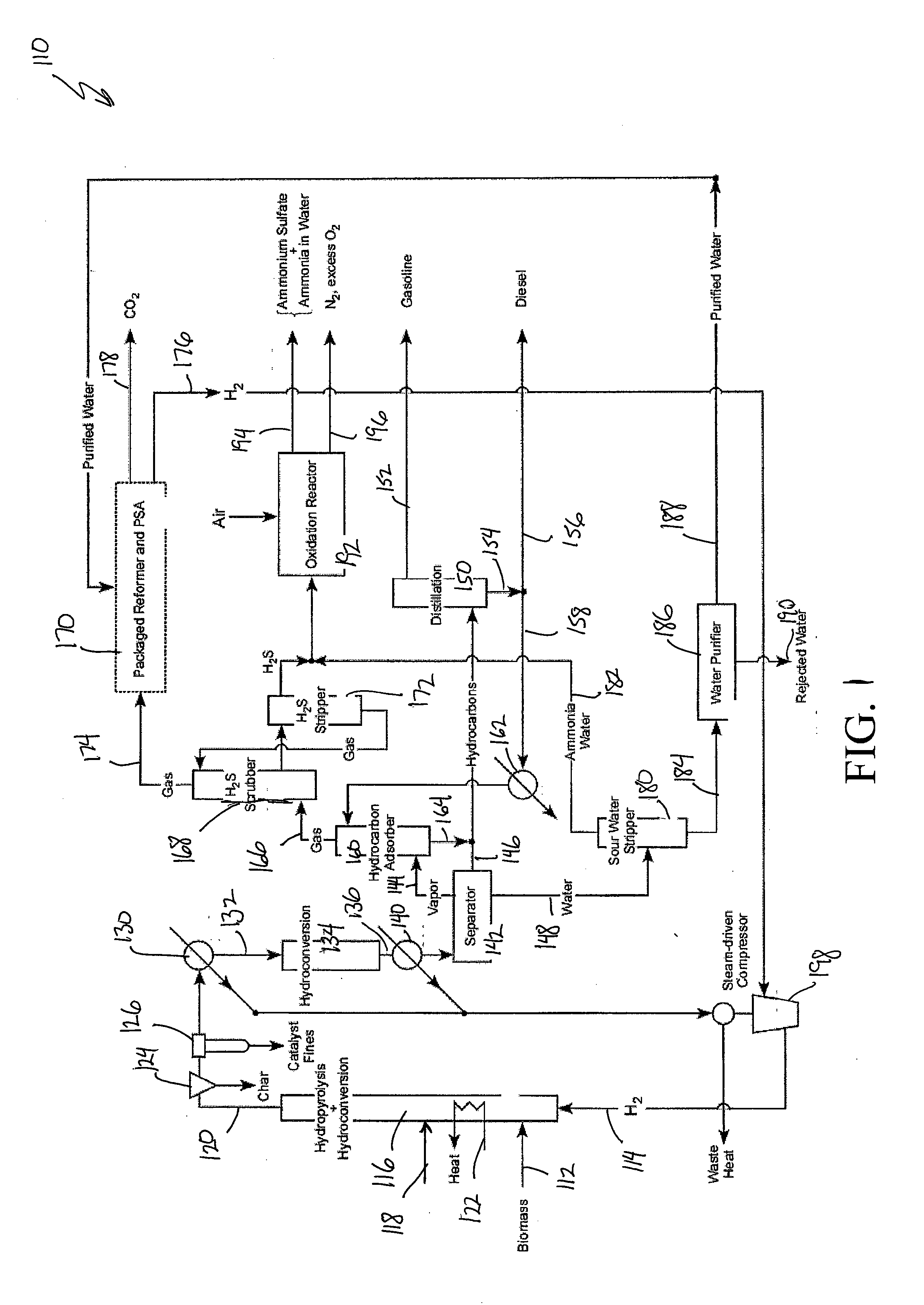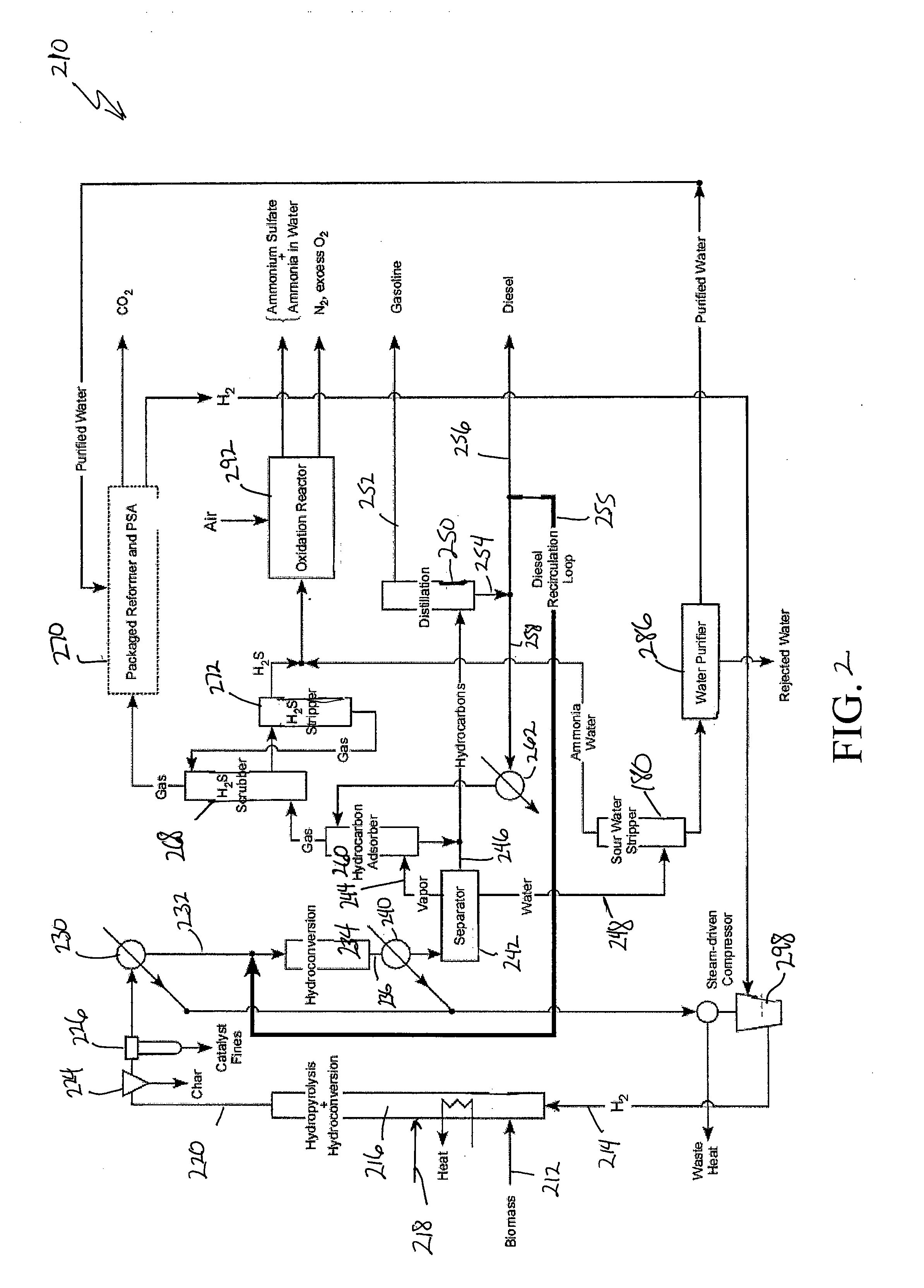Direct production of fractionated and upgraded hydrocarbon fuels from biomass
a hydrocarbon fuel and biomass technology, applied in the field of integrated processes, can solve the problems of inability to meet the needs of industrial production,
- Summary
- Abstract
- Description
- Claims
- Application Information
AI Technical Summary
Benefits of technology
Problems solved by technology
Method used
Image
Examples
Embodiment Construction
[0042]FIGS. 1-9 show various preferred embodiments of the subject invention.
[0043]FIG. 1 shows a schematic flow diagram, illustrating a process of the present invention in one of its simpler forms. Unless otherwise specifically noted, it is to be understood that in this and the following described schematic process flow diagrams, similar streams and component parts, including streams and component parts not specifically called out in subsequent diagrams, are generally numbered utilizing the same last two numerical digits but with the first numerical digit varying dependent on the particular figure.
[0044]The process shown in FIG. 1 is generally designated by the reference numeral 110 and is a process for producing hydrocarbon fuels from biomass in accordance with one embodiment of this invention. As more fully described below, the process shown in FIG. 1 involves modifications to the process, shown and / or described in one or more of the following U.S. patent application Ser. No. 12 / 4...
PUM
| Property | Measurement | Unit |
|---|---|---|
| size | aaaaa | aaaaa |
| pressure | aaaaa | aaaaa |
| temperature | aaaaa | aaaaa |
Abstract
Description
Claims
Application Information
 Login to View More
Login to View More - R&D
- Intellectual Property
- Life Sciences
- Materials
- Tech Scout
- Unparalleled Data Quality
- Higher Quality Content
- 60% Fewer Hallucinations
Browse by: Latest US Patents, China's latest patents, Technical Efficacy Thesaurus, Application Domain, Technology Topic, Popular Technical Reports.
© 2025 PatSnap. All rights reserved.Legal|Privacy policy|Modern Slavery Act Transparency Statement|Sitemap|About US| Contact US: help@patsnap.com



